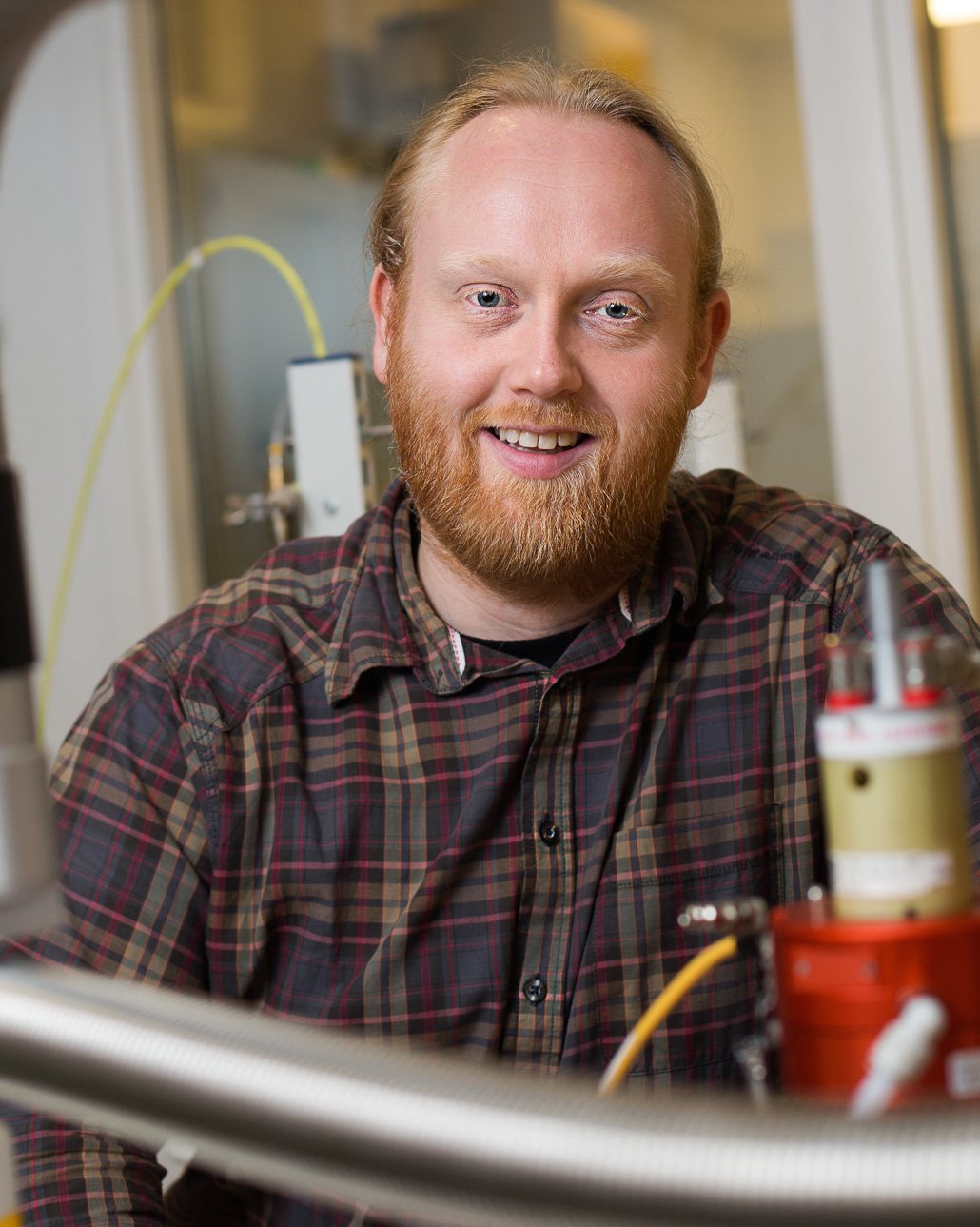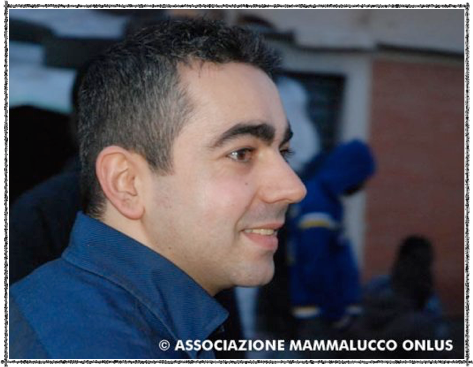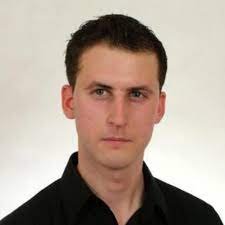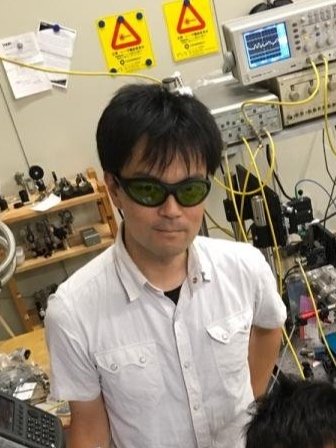
Upcoming Talks
Please Note: Times listed without a location to denote time zone can be assumed to be in UTC.

Samuel Grant
Title to be announced
Abstract to be announced.
8:00 AM California or 11:00 AM Boston or 5:00 PM Paris or 8:30 PM Delhi

Vlad Michaelis
Title to be announced
Abstract to be announced.
8:00 AM California or 11:00 AM Boston or 5:00 PM Paris or 8:30 PM Delhi

Michael Ryan Hansen
Title to be announced
Abstract to be announced.
8:00 AM California or 11:00 AM Boston or 5:00 PM Paris or 8:30 PM Delhi

James Eills
Title to be announced
Abstract to be announced.
8:00 AM California or 11:00 AM Boston or 5:00 PM Paris or 8:30 PM Delhi

Jiafei Mao
Title to be announced
Abstract to be announced.
8:00 AM California or 11:00 AM Boston or 5:00 PM Paris or 8:30 PM Delhi

David Rovnyak & Frank Delaglio
Title to be announced
Abstract to be announced.
8:00 AM California or 11:00 AM Boston or 5:00 PM Paris or 8:30 PM Delhi

Guinevere Mathies
Pulsed Dynamic Nuclear Polarization
All spectroscopic methods evolve from continuous-wave to pulsed. Magic-angle-spinning NMR in combination with dynamic nuclear polarization (MAS DNP) has, so far, been an exception. We try to change that by designing DNP pulse sequences.
For the time being, pulsed DNP experiments are only possible at low magnetic fields. The basic reason is that suitable microwave sources are not available above 95 GHz. Nevertheless, we learned a lot in recent years about designing DNP sequences. As a result, there now exists a family of DNP sequences, which appear, based on their matching condition, compatible with high-field MAS DNP.[1-4]
The theoretical description of a single transfer of polarization in a dipolar-coupled electron-nuclear spin system is under control. To build up DNP of bulk nuclei, however, many such transfers are needed. We recently found a numerically stable method to simulate pulsed DNP in the steady state, which even predicts the optimal repetition rate of a sequence. In my talk I will get you up to speed.
1. Tan et al. Sci. Adv. 5(1), eaav6909 (2019)
2. Redrouthu and Mathies J. Am. Chem. Soc. 144(4), 1513–1516 (2022)
3. Wili et al. Sci. Adv. 8(28), eabq0536 (2022)
4. Redrouthu, Kumar, Mathies J. Chem. Phys. 159, 014201 (2023)
8:00 AM California or 11:00 AM Boston or 4:00 PM Paris or 8:30 PM Delhi

Lauren Marbella
Linking structure to function at electrochemical interfaces: Li-ion and beyond
Despite the fact that the solid electrolyte interphase (SEI) on Li metal was described 45 years ago, it is still the only aspect of the battery that has ambiguity in function. As a community, we have struggled to establish structure-property-performance relationships for the SEI because it is a nanoscale composite that contains chemical compounds whose properties deviate from their bulk counterparts. In this talk, I will describe how we have used nuclear magnetic resonance (NMR) spectroscopy to characterize the structure and dynamics of interfacial phenomena in Li-ion and beyond Li-ion batteries and correlate these features with battery performance. In particular, I will focus on the use of NMR to quantify the source of Li inventory loss, the mechanism of transition metal dissolution, structural evolution at the electrode/electrolyte interface, and the function of the SEI. Insight from these methods allow us to determine the precise mechanisms of failure that arise inside of functional devices as well as develop new approaches to mitigate performance decline.
8:00 AM California or 11:00 AM Boston or 4:00 PM Paris or 8:30 PM Delhi

Chad Rienstra
Magic-Angle Spinning Probes for High and Ultra-High Fields
In this talk, I will describe recent progress in the development of custom-designed probes for magic-angle spinning solid-state NMR at 600, 750, 900 and 1100 MHz, including versions with improved sensitivity for 13C and 1H detection and applications to biological macromolecules including microcrystals, fibrils, membrane proteins and RNAs.
8:00 AM California or 11:00 AM Boston or 4:00 PM Paris or 8:30 PM Delhi

Claudia Avalos
Characterizing Photoactive Materials with Magnetic Resonance Tools
In this presentation, I will give a broad overview of methods in magnetic resonance to characterize the structure of a subset of photoactive materials. In particular I will focus on a broad discussion of solid-state NMR and EPR methods used to characterize defect doped photoluminescent lead halide perovskites and small-molecule organic semiconductors. The methods discussed will not be an exhaustive list, but will aim to describe a general workflow of characterization based on previously published reviews and methods applied in my research lab. Links to reviews and existing simulation tutorials will be included throughout the presentation.
8:00 AM California or 11:00 AM Boston or 5:00 PM Paris or 9:30 PM Delhi

Benno Meier
Sensitivity and Repeatability of Hyperpolarized NMR in Dissolution-DNP Experiments
Sensitivity is central to nuclear magnetic resonance. Its quantitative measure is the signal-to-noise ratio that can be attained within a specified time using a given mass or concentration of an analyte. In this lecture we derive expressions for the signal-to-noise ratio in both time- and frequency-domain when working at thermal equilbirium. We then turn to the Dissolution-Dynamic Nuclear Polarization (D-DNP) experiment, an experiment which can enhance the signal-to-noise ratio by boosting the nuclear spin polarization by orders of magnitude. However, the gains in nuclear spin polarization do not always translate into equally sized sensitivity gains. We argue that human operators are a key culprit, and show how stringent automation of the bullet-DNP experiment may be used to record repeatable results around the clock.
8:00 AM California or 11:00 AM Boston or 5:00 PM Paris or 9:30 PM Delhi

Ville-Veikko Telkki
Ultrafast Laplace NMR and its multidisciplinary applications
Laplace NMR (LNMR), comprising relaxation and diffusion experiments, provides unique information about molecular dynamics, structures and chemical environments. Multidimensional experiments enable correlating relaxation and diffusion parameters to probe different motional types and regimes as well as observing molecular exchange through relaxation or diffusion contrast. This presentation describes how multidimensional T1, T2 and T1r relaxation as well as diffusion experiments can be accelerated by orders of magnitude by spatial encoding and other means, allowing monitoring fast molecular processes in real time. These single-scan ultrafast LNMR experiments facilitate also significantly the use of nuclear spin hyperpolarization to boost sensitivity, making low concentration substances observable. The experiments are feasible also with low-field, single-sided magnets with inhomogeneous field, enhancing the portability and cost-efficiency of advanced NMR analysis. The representation highlights the multidisciplinary applications of the ultrafast LNMR methods, ranging from CO2-capturing cements, battery materials and dairy products to cellular metabolism, protein-ligand interactions, and atmospheric surfactant solutions.
8:00 AM California or 11:00 AM Boston or 5:00 PM Paris or 9:30 PM Delhi

Tom Wenckebach
Electron spin-lattice relaxation: the direct and Raman process of spin 1/2 systems
Electron spin-lattice relaxation represents the interface between the spin on paramagnetic centres -- transition metal ions, radicals, defects etc. -- and lattice vibrations. This interface is indirect and requires two interactions: the spin-orbit interaction between the spin and the orbits of the paramagnetic centres and the orbit-lattice interaction between the latter and the lattice. The purpose of this talk is to provide an overview of all these elements of the process and to show how the spin-orbit interaction relates the relaxation rates to the deviation of the g-factor from that of a free electron spin.
8:00 AM California or 11:00 AM Boston or 5:00 PM Paris or 8:30 PM Delhi

Tatyana Polenova
Integrative Structural Biology of Protein Assemblies: Challenges and Opportunities for Magnetic Resonance
I will present recent developments in MAS NMR techniques for atomic-resolution structural analysis of large biological assemblies. Drawing on studies of diverse systems from our lab, including the kinesin motor domain with polymerized microtubules, cofilin bound to filamentous actin, and HIV-1 protein assemblies interacting with small-molecule maturation inhibitors, I will illustrate how with MAS NMR, structural and dynamic details, as well as drug interactions were uncovered, that are inaccessible using other approaches. Additionally, I will discuss the benefits of combining MAS NMR with medium-resolution cryo-EM and MD simulations to enhance structural understanding, and address the current challenges and future directions for magnetic resonance in integrative structural biology.
8:00 AM California or 11:00 AM Boston or 5:00 PM Paris or 9:30 PM Delhi

Nesreen Elathram
A Targeted DNP Approach to Study the Activity of Membrane Proteins in Whole Bacterial Cells
While solid-state NMR spectroscopy is the method of choice when it comes to studying the
dynamics of proteins in heterogeneous complex environments, inherently dilute samples like membrane proteins demand a more sensitive technique. In this study, we use a targeted DNP approach to study membrane proteins in whole cells where an unnatural amino acid (UAA) is installed into the region of interest on the protein. In the context of whole bacterial cells, we install a UAA into the protein Ail and target it with a DNP polarization agent using bio-orthogonal chemistry. This method specifically enhances the NMR signals of the region of interest over the cellular background enabling us to study protein-lipid interactions in the native context..
8:00 AM California or 11:00 AM Boston or 5:00 PM Paris or 9:30 PM Delhi

Julie Forman-Kay
NMR approaches for intrinsically disordered proteins
NMR is a powerful tool for obtaining site-specific information about dynamic systems, including intrinsically disordered proteins and protein regions (IDPs/IDRs) which do not adopt unique, stable folded structures. While computational approaches are increasingly powerful for stable proteins and protein domains, there is a huge need for experimental information about IDPs, IDRs and the highly dynamic complexes that they often make with other disordered proteins, folded domains and other biomolecules. The lecture will highlight examples of NMR studies of IDPs and their dynamic complexes, including condensed state models of those found in biomolecular condensates.
8:00 AM California or 11:00 AM Boston or 5:00 PM Paris or 9:30 PM Delhi

Sheetal Jain
Understanding Dynamic Nuclear Polarization: Insights from Average Hamiltonian Theory
Average Hamiltonian Theory (AHT) effectively explains the mechanisms,
efficiencies, and optimal conditions for solid-state NMR pulse sequences.
In Dynamic Nuclear Polarization (DNP), AHT describes how electron-
nuclear spin couplings drive polarization transfer under microwave
irradiation. By simplifying spin dynamics, AHT offers insights into
polarization mechanisms like the solid effect, cross effect, and pulsed DNP,
helping predict conditions to maximize nuclear spin polarization and
enhance NMR signal sensitivity.
8:00 AM California or 11:00 AM Boston or 5:00 PM Paris or 8:30 PM Delhi

Adam Altenhof
Low-Field Magnetic Resonance for Detection and Other Applications
Low-field NMR can offer better resolution than at high-field. Extremely homogeneous B0 fields
and low susceptibility broadening results in signal lifetimes around 1 – 10’s of seconds. Earth’s
field NMR and nuclear quadrupole resonance (NQR) both offer low cost, high portability, and
applications for detection of illicit materials, including fentanyl.
8:00 AM California or 11:00 AM Boston or 5:00 PM Paris or 8:30 PM Delhi

Fred Mentink-Vigier
Electron Paramagnetic Resonance: Advancing Magic Angle Spinning Dynamic Nuclear Polarization
Electron Paramagnetic Resonance (EPR) is crucial for analyzing paramagnetic species used in Dynamic Nuclear Polarization (DNP). This overview covers EPR fundamentals and its application to studying biradicals, which are key for high-field Magic Angle Spinning (MAS) DNP.
8:00 AM California or 11:00 AM Boston or 5:00 PM Paris or 8:30 PM Delhi

Meghan Halse
Parahydrogen-enhanced benchtop NMR spectroscopy
Benchtop NMR spectrometers, due to their portability and affordability, have the potential to transform the accessibility of NMR spectroscopy. Hyperpolarisation can break the link between NMR sensitivity and magnetic field strength, overcoming a key limitation of low-field benchtop NMR spectrometers. This presentation will explain the fundamentals of parahydrogen hyperpolarisation and explore recent developments in its use with benchtop NMR detection, including progress towards analytical applications.
8:00 AM California or 11:00 AM Boston or 5:00 PM Paris or 8:30 PM Delhi

Jean-Nicolas Dumez
Gradient pulses on moving spins: flow NMR methods for reaction monitoring
Flow NMR is a powerful approach to monitor chemical reactions, with applications in fields such as catalysis and polymer science. The sample flow makes it necessary to revisit some of the core concepts of NMR pulse sequences. This presentation will describe recent developments of fast multidimensional NMR methods that are applicable in continuous flow, and the underlying spin dynamics concepts.
8:00 AM California or 11:00 AM Boston or 5:00 PM Paris or 8:30 PM Delhi

Tamar Wolf
Dipolar Order Saves the Day: Sensitivity Enhancement under Static and MAS Conditions
Sensitivity enhancement of unreceptive nuclei is a major goal of solid-state NMR. This tutorial will focus on methods to enhance the sensitivity of dilute and unreceptive nuclei under static and magic-angle-spinning (MAS) conditions using dipolar order, the theoretical framework to understand them, and practical considerations when performing them.
8:00 AM California or 11:00 AM Boston or 5:00 PM Paris or 8:30 PM Delhi

Giuseppe Pileio
Long-loved nuclear singlet spin order and its applications
Nuclear singlet spin order is the population difference between the singlet and triplet states in a system of two coupled spin-1/2 nuclei. This form of order is long-lived, silent and accessible on demand. For almost two decades, my research activities were focused at exploiting these three main properties of nuclear spin order to develop new applications in NMR and MRI.
In this talk, I will introduce the concept and the main features of singlet order as well as the tools developed for its manipulations.
I will then show how we are using this form of order to enhance several NMR and MRI techniques for the long-term storage of hyperpolarisation, to obtain a new form of contrast in MRI, for the measurements of slow diffusion and flow, or for the determination of structural features of porous media such as tortuosity and structural anisotropy through singlet-assisted diffusion NMR.
8:00 AM California or 11:00 AM Boston or 5:00 PM Paris or 8:30 PM Delhi

Leif Schröder
Hyperpolarized Xenon NMR for Exploring Molecular Host Cavities and Advancing MR Imaging
The large chemical shift range of Xe-129 NMR makes this nucleus a valuable probe in spectroscopy and biomedical imaging. Hyperpolarized Xe can be used also as dissolved noble gas to provide 10’000-fold improved sensitivity over extended periods of time. In combination with saturation transfer techniques, reversibly bound hyperpolarized xenon gives insights into exchange kinetics of various host-guest complexes. This talk will give an overview of studies investigating the affinity of dissolved Xe for various hosts like biogenic hollow protein structures with attoliter volumes or synthetic hosts for trapping individual Xe atoms. Both strategies find applications in the spectroscopic investigation of exchange kinetics of host-guest systems and in the design of ultra-sensitive magnetic resonance imaging agents.
9:00 AM California or 12:00 PM Boston or 5:00 PM Paris or 9:30 PM Delhi

Robert Powers
The Application of NMR Metabolomics to Drug Discovery and Disease Diagnosis
NMR-based metabolomics has benefited a variety of fields including drug discovery and disease diagnosis. Metabolomics is technically very challenging and requires expertise in a diversity of scientific areas. In this regard, this tutorial will discuss best practices for sample preparation and handling, data collection and analysis, and statistical modeling and interpretation to achieve biologically and clinically significant results.
8:00 AM California or 11:00 AM Boston or 4:00 PM Paris or 8:30 PM Delhi

Sean Holmes
Title to Be Announced
Abstract to be announced.
8:00 AM California or 11:00 AM Boston or 5:00 PM Paris or 9:30 PM Delhi

Gareth Morris
Why Is DOSY So Different From COSY?
Peaks in COSY, NOESY, ROESY and HSQC 2D spectra either appear where they should, or not at all. In DOSY spectra, it is all too common to see peaks at incorrect positions in the diffusion domain. This tutorial will explore why this happens, what we can do about it, and how to avoid being misled by DOSY spectra.
8:00 AM California or 11:00 AM Boston or 5:00 PM Paris or 9:30 PM Delhi

Ann-Christin Pöppler
Challenges in the characterization of polymeric materials for drug delivery and tissue engineering applications
NMR spectroscopy is sensitive to subtle changes in local environment and dynamics over multiple length and time scales making it a versatile technique to study polymeric materials and incorporated molecules. Challenges, which will be discussed in this presentation arise from the size (distribution), rigidity and intrinsic disorder of the samples.
8:00 AM California or 11:00 AM Boston or 5:00 PM Paris or 9:30 PM Delhi

Nergiz Sahin Solmaz
Single Chip Dynamic Nuclear Polarization Microsystems
Dynamic nuclear polarization (DNP) is one of the most powerful and versatile hyperpolarization methods to enhance nuclear magnetic resonance (NMR) signals. A major drawback of DNP is the cost and complexity of the required microwave hardware, especially at high magnetic fields and low temperatures. To overcome this drawback and with the focus on the study of nanoliter and subnanoliter samples, I will present single chip DNP microsystems where the microwave excitation and detection are performed locally on chip without the need of external microwave generators and transmission lines.
8:00 AM California or 11:00 AM Boston or 5:00 PM Paris or 9:30 PM Delhi

Leah Casabianca
NMR Strategies for Examining Interactions Between Small Molecules and Nanoparticle Surfaces
Interactions between small molecules and the surface of nanoparticles are important in a variety of fields, from drug delivery to the fate of nanoparticles in the environment. In this talk, I will discuss several NMR techniques that can be used to gain structural and dynamic information about these interactions, with a focus on saturation-transfer difference (STD)-NMR.
8:00 AM California or 11:00 AM Boston or 5:00 PM Paris or 9:30 PM Delhi

Yongchao Su
Solution and Solid-state NMR Applications in Pharmaceutical Sciences
Advancements in drug delivery systems and therapeutic modalities have driven the growth of modern medicine, while also increasing molecular complexity. NMR spectroscopy is a pivotal tool in understanding the structural attributes that contribute to overcoming physiological and physicochemical barriers, thereby providing scientific rationales for drug development. This presentation will highlight the structure-related challenges in the development of pharmaceutical drug products and the role that solution and solid-state NMR techniques play in addressing them, with examples from both chemical and biological therapies.
8:00 AM California or 11:00 AM Boston or 5:00 PM Paris or 9:30 PM Delhi

Jan Stanek
High-dimensional spectroscopy and other tools to tackle complexity in biological solid-state NMR
Fast (> 60 kHz) magic-angle spinning provides high sensitivity and narrowed 1H linewidths, however, spectral analysis of large proteins are often severely hampered by peak overlap and/or ambiguity, depending on system size and sample quality. In this tutorial lecture, I will discuss several experimental techniques to address this, namely high-dimensional (4D, 5D) spectroscopy with non-uniform sampling, projection spectroscopy and time-shared acquisition. Additionally, I will explore selected tools for automation of resonance assignment and present early data on protein dynamics measurement as pseudo-4D series.
8:00 AM California or 11:00 AM Boston or 5:00 PM Paris or 9:30 PM Delhi

Brad Chmelka
Scaling Analyses of Hyperpolarization Transfer in Solids and Across Interfaces
Classical scaling analyses, with analogies to heat conduction and mass transfer, quantitatively describe the propagation and dissipation of non-Boltzmann spin polarization in heterogeneous solids. The analyses yield general design criteria for predicting, analyzing, and optimizing polarization transfer within solids and across interfaces between dissimilar materials.
8:00 AM California or 11:00 AM Boston or 5:00 PM Paris or 9:30 PM Delhi

Kazuyuki Takeda
Inside an NMR Spectrometer
Let us take a brief look at what is happening inside an NMR spectrometer when we operate it, running pulse sequences and acquiring NMR signals. In particular, I will focus on open-resource, home-built NMR spectrometers we routinely use in our lab, and show how we apply them in the conventional and unconventional NMR experiments.
8:00 AM California or 11:00 AM Boston or 5:00 PM Paris or 8:30 PM Delhi

Alexej Jerschow
Title to Be Announced
Abstract to be announced.
8:00 AM California or 11:00 AM Boston or 5:00 PM Paris or 8:30 PM Delhi

Tairan Yuwen
NMR Pulse Sequence Basics and Design Principles
NMR is commonly used for studying structure and dynamics of molecules, and many NMR
experiments have been developed for different purposes. In each NMR experiment it is necessary to choose the most suitable NMR pulse sequence to obtain optimal results, which requires understanding about the basic theory. During NMR pulse sequence the studied system is evolved under different types of interactions, which can be represented by density matrix or product operator. The basic syntax for NMR pulse sequence programming will be briefly introduced together with several examples, which helps to understand how NMR pulse sequences work and make further optimization.
8:00 AM California or 11:00 AM Boston or 5:00 PM Paris or 8:30 PM Delhi